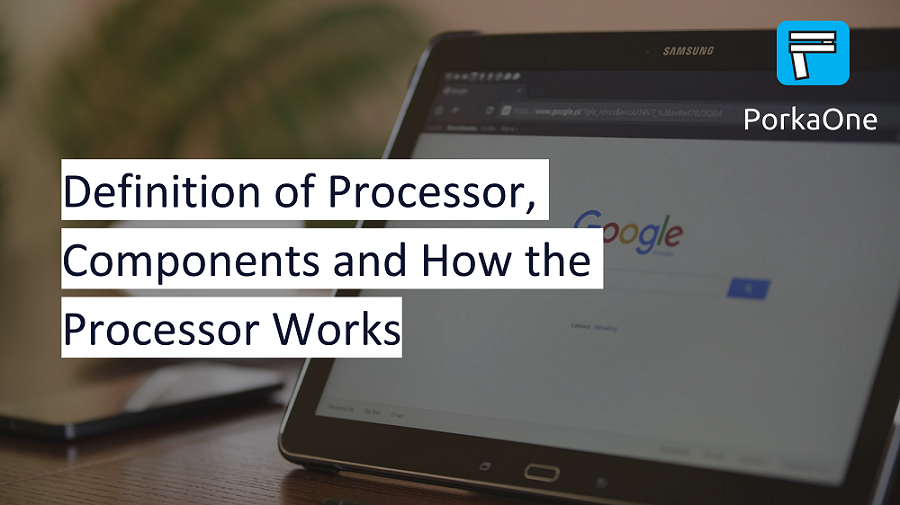💻 Processor
The processor inside the computer is the main player or brain in driving all activities or processes that are carried out. The better the selected processor, the better the process is done. The processor is also referred to as the CPU (central processing unit). The CPU is in the form of an electronic circuit that can carry out arithmetic, logic, controlling, input and output operations based on program commands.

|
| Processor |
🔭 Processor Function
From the little explanation above, we can conclude that one of the
functions of the processor is to drive every activity or process that is
running. The full function description is as follows:
1. Data processing center in a computer system
2. Manage process traffic and distribute it to components that need it,
such as ram, memory, camera, keyboard, and other components.
3. Maintain computer performance and stabilization
4. Support computer specific activities such as design, rendering,
arithmetic calculations, logic, etc
📦 Processor Component
1. Control Unit (CU)
Set the course of activities or activities that are being carried out by the computer, starting from input to output. Also manages how multiple processes that occur at one time are executed sequentially and distribute them to components that need such as ram, vga, hard disk, ssd, ethernet modules etc. alternately without crashes2. Aritmatics Logical Unit(ALU)
The processor is responsible for performing arithmetic calculations according to the instructions of the computer program. This unit is needed so that the process or activity can be done correctly without any errors due to wrong calculations.3. Register Unit(RU)
This unit is a storage component that is smaller in size than the main memory or main memory, but has a very high access speed. Data is stored temporarily during the execution process. Data that has been processed in the CU unit and ALU unit will later be stored in this component or unit again, and later the data will be processed again.👻 How the Processor Works
Simply put, when we do certain activities on a computer, whether it's typing, running the mouse cursor, clicking application icons and all other activities. Then the activity will be continued to the processor. Then the processor will manage the process traffic that we do. Then the processor sends it back to the unit and related components to produce the output we want.
So in short Input → process → output. That is the easy picture,
technically speaking. The processor does at least 5 processes as follows:
1. Fetch
The processor fetches the instructions to be executed from the computer's memory. As I have explained above. Instructions are carried out by the user, in the form of typing, clicking on the mouse, or opening certain applications.2. Decode
After the data is retrieved, the processor will read one by one the instructions given. This reading functions so that the processor understands what the user wants and can forward it to the related unit or component according to the instructions.3. Execute
After being read and understood, then the processor carries out the instructions given, while conveying them to the related components. And this is where the processor runs the arithmetic unit or ALU for short.4. Store
Once executed on the ALU unit. Furthermore, the execution results will be stored in the main memory or register unit (RU). And the results can be retrieved if needed.
The processor will perform these stages repeatedly at a speed determined
by the clock speed. Selection of a good processor will speed up the
process being done. In addition, SSD support and large RAM memory
capacity are also needed to support processor performance.
So many articles this time about the meaning of the processor,
components and how the processor works. Hopefully this article is
useful, if you have questions and suggestions, please send a comment
below. That is all and thank you.







0 Comments
Come on ask us and let's discuss together
Emoji